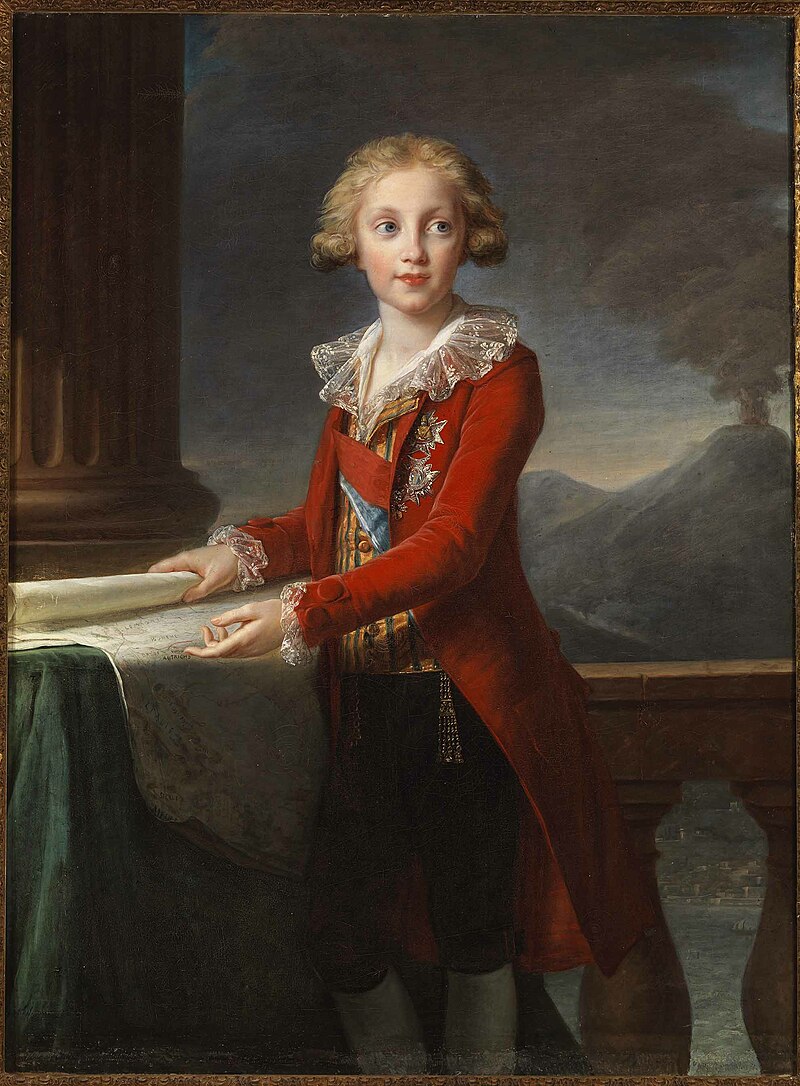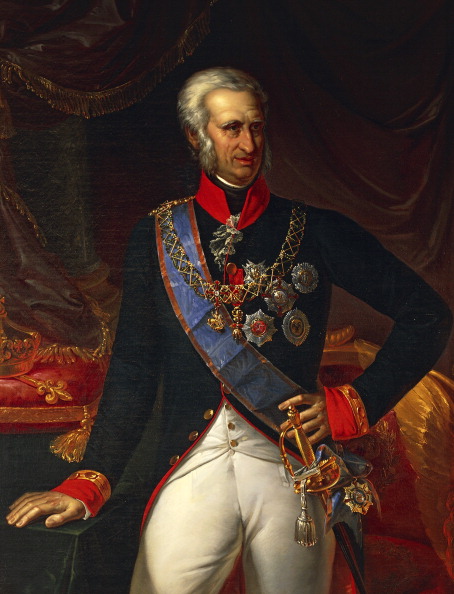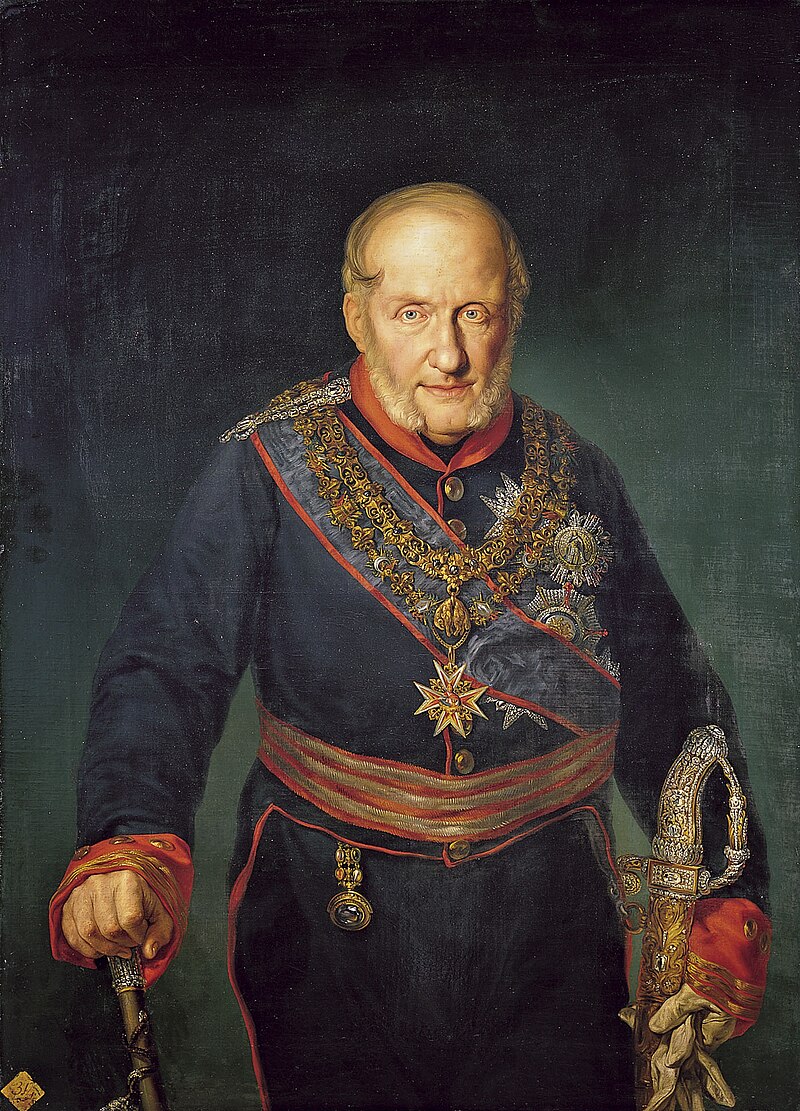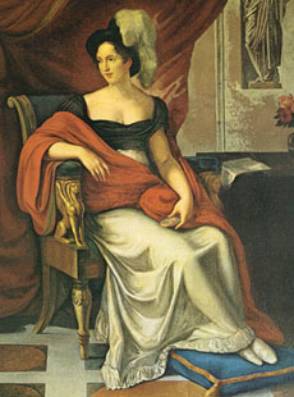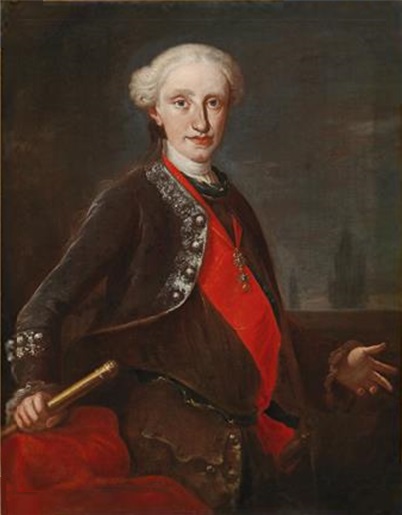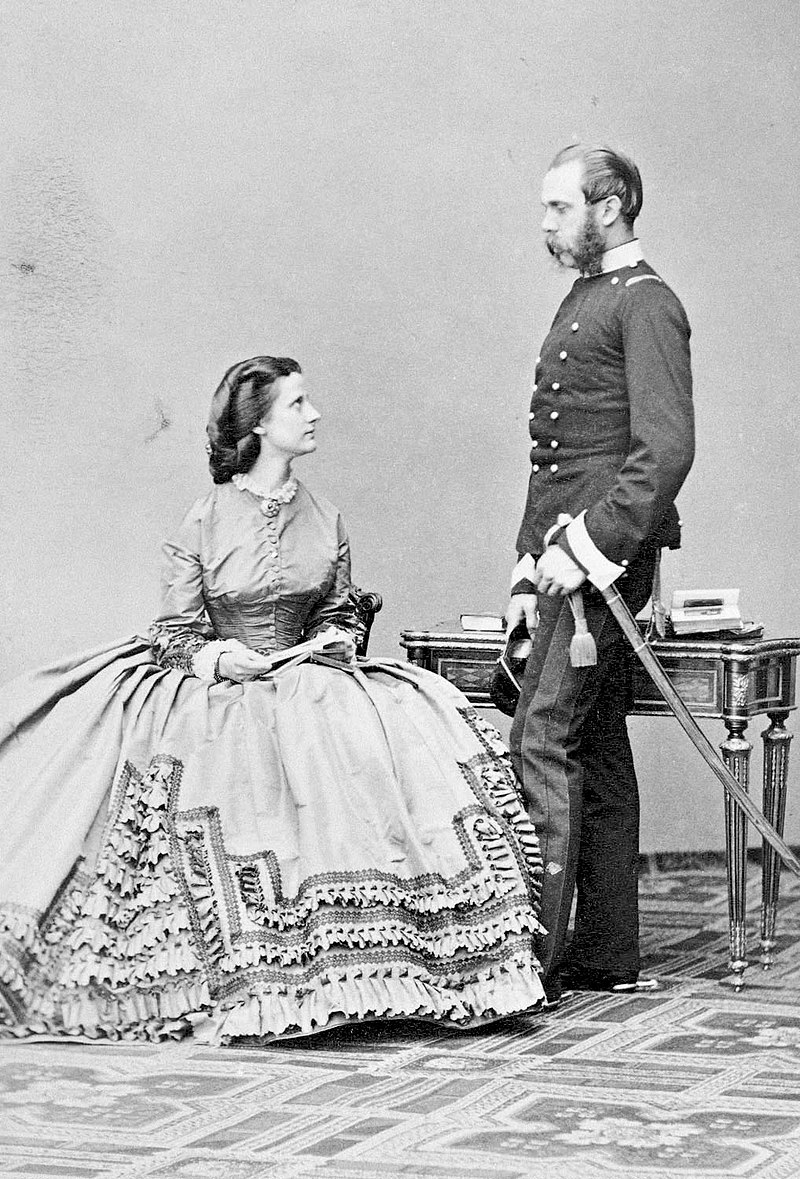by Susan Flantzer
© Unofficial Royalty 2021
The Kingdom of the Two Sicilies was located in today’s southern Italy. It included the island of Sicily and all of the Italian peninsula south of the Papal States. Ferdinando I, the first King of the Two Sicilies, had previously reigned over two kingdoms, as Ferdinando IV of the Kingdom of Naples and Ferdinando III of the Kingdom of Sicily. He had been deposed twice from the throne of Naples: once by the revolutionary Parthenopean Republic for six months in 1799 and again by Napoleon in 1805, before being restored in 1816 after the defeat of Napoleon. After the 1816 restoration, the two kingdoms were united into the Kingdom of the Two Sicilies.
Vittorio Emanuele II, King of Sardinia became a driving force behind the Italian unification movement along with Giuseppe Garibaldi, a general and nationalist, and Giuseppe Mazzini, a politician and journalist. Garibaldi conquered Naples and Sicily, the territories of the Kingdom of Two Sicilies. Francesco II, King of the Two Sicilies was deposed, the Kingdom of the Two Sicilies ceased to exist, and its territory was incorporated into the Kingdom of Sardinia. Eventually, the Sardinian troops occupied the central territories of the Italian peninsula, except Rome and part of Papal States. With all the newly acquired land, Vittorio Emanuele II was proclaimed the first King of the new, united Kingdom of Italy in 1861.
********************

Maria Clementina of Austria, Duchess of Calabria; Credit – Wikipedia
Maria Clementina of Austria was the first wife of the future Francesco I, King of the Two Sicilies. Maria Clementina Josepha Johanna Fidelis was born on April 24, 1777, at the Villa del Poggio Imperiale in Poggio Imperiale in the Grand Duchy of Tuscany, now in Italy. She was the tenth of the sixteen children and the third of the five daughters of Pietro Leopoldo I, Grand Duke of Tuscany (later Leopold II, Holy Roman Emperor) and Maria Luisa of Spain. Maria Clementina’s paternal grandparents were the formidable and powerful Holy Roman Empress Maria Theresa, who was in her own right Archduchess of Austria, Queen of Hungary, Queen of Croatia, and Queen of Bohemia, and Francis Stephen, Holy Roman Emperor, Grand Duke of Tuscany, and Duke of Lorraine. Even though her husband was the nominal Holy Roman Emperor, Maria Theresa wielded the real power. Maria Clementina’s maternal grandparents were Carlos III, King of Spain and Maria Amalia of Saxony.

Leopold I, Grand Duke of Tuscany, his wife Maria Luisa & their children (left to right) Maria Theresa, Karl, Alexander Leopold, Maria Clementina, Maria Anna, Josef Anton, Franz, & Ferdinand; Credit – Wikipedia
Maria Clementina had fifteen siblings:
- Maria Theresa of Austria (1767 – 1827), married Anton, King of Saxony, had three children who died in early childhood
- Franz II, Holy Roman Emperor, later Franz I, Emperor of Austria (1768 – 1835) married (1) Elisabeth of Württemberg, had one daughter who died in infancy, died in childbirth (2) Maria Theresa of Naples and Sicily, had twelve children, died in childbirth (3) Maria Ludovika of Austria-Este, no children, died from tuberculosis (4) Caroline Augusta of Bavaria, no children
- Ferdinando III, Grand Duke of Tuscany (1769 – 1824), married (1) Luisa of Naples and Sicily, had five children, died in childbirth with her stillborn son (2) Maria Ferdinanda of Saxony, no children
- Maria Anna of Austria (1770 – 1809), unmarried, Abbess at the Theresian Convent in Prague
- Karl of Austria (1771 – 1847), married Henrietta of Nassau-Weilburg, had seven children
- Alexander Leopold of Austria (1772 – 1795), unmarried, died from burns from a fireworks display he had created
- Albrecht Johann Joseph of Austria (1773 – 1774), died in infancy
- Maximilian of Austria (1774 – 1778), died in childhood
- Josef Anton of Austria (1776 – 1847, married (1) Alexandra Pavlovna of Russia, had one daughter who died in infancy, died from childbirth complications (2) Hermine of Anhalt-Bernburg-Schaumburg-Hoym, had fraternal twins, died from childbirth complications (3) Maria Dorothea of Württemberg, had five children
- Anton Viktor of Austria, Grand Master of Teutonic Knights (1779 – 1835), unmarried
- Maria Amalia of Austria (1780 – 1798), unmarried
- Johann of Austria (1782 – 1859), married morganatically Anna Plochl, had one son
- Rainer Joseph of Austria (1783 – 1853), married Elisabeth of Savoy-Carignan, had eight children
- Ludwig of Austria (1784 – 1864), unmarried
- Rudolf of Austria, Cardinal-Archbishop of Olomouc (1788 – 1831), unmarried

Maria Clementina’s husband Francesco, circa 1793-1797; Credit – Wikipedia
Maria Clementina was raised in the Grand Duchy of Tuscany until the death of her paternal uncle Joseph II, Holy Roman Emperor in 1790. Her father became Holy Roman Emperor and the family moved to Vienna, Austria. In that same year, Maria Clementine became engaged to her double first cousin Franceso, Duke of Calabria and heir to the throne of Naples and Sicily, the son of Ferdinando, King of Naples and King of Sicily from 1759 – 1816, and King of the Two Sicilies from 1816 – 1825, and his first wife Archduchess Maria Carolina of Austria. Her father Leopold II was the brother of Francesco’s mother and her mother Maria Luisa was the sister of Francesco’s father. The marriage was planned to strengthen the alliance between Naples and Sicily and Austria. A proxy marriage took place in 1790 In Vienna, Austria. However, because the bride and the groom were both only thirteen years old and the French Revolution caused unrest in Europe, the actual wedding did not occur for seven years. On June 25, 1797, Francesco and Maria Clementina were married in person in Foggia, Kingdom of Naples, now in Italy. Upon her marriage, she was styled Duchess of Calabria, the female counterpart of her husband’s title Duke of Calabria as the heir apparent.
Maria Clementina and Francesco had two children:
- Maria Carolina of Bourbon-Two Sicilies (1798 – 1870), married (1) Charles Ferdinand d’Artois, Duke of Berry, son of the future Charles X, King of France, assassinated while leaving the opera in Paris, had four children but two died soon after birth (2) Ettore Carlo Lucchesi-Palli, 8th Duke della Grazia, had five children
- Fernando Francesco of Bourbon-Two Sicilies (1800 – 1801), died in infancy
Maria Clementina and Francesco had a loving and happy but short marriage. She died from tuberculosis on November 15, 1801, aged 24, in Naples, then in the Kingdom of Naples, later in the Kingdom of the Two Sicilies, now in Italy, before Francesco became King of the Two Sicilies. Her infant son had died four months earlier. Maria Clementina was buried at the Basilica of Santa Chiara in Naples with her son. Francesco married again in 1802 to another first cousin, Maria Isabella of Spain, and the couple had twelve children. Francesco reigned as King of the Two Sicilies from 1825 – 1830.

Coat of arms of the House of Bourbon-Two Sicilies on the entrance to the royal crypt; Credit – Di Giuseppe Guida – Flickr: Basilica di Santa Chiara., CC BY 2.0, https://commons.wikimedia.org/w/index.php?curid=20267754
This article is the intellectual property of Unofficial Royalty and is NOT TO BE COPIED, EDITED, OR POSTED IN ANY FORM ON ANOTHER WEBSITE under any circumstances. It is permissible to use a link that directs to Unofficial Royalty.
Kingdom of the Two Sicilies Resources at Unofficial Royalty
Works Cited
- De.wikipedia.org. 2021. Maria Klementine von Österreich (1777–1801) – Wikipedia. [online] Available at: <https://de.wikipedia.org/wiki/Maria_Klementine_von_%C3%96sterreich_(1777%E2%80%931801)> [Accessed 7 August 2021].
- En.wikipedia.org. 2021. Archduchess Maria Clementina of Austria – Wikipedia. [online] Available at: <https://en.wikipedia.org/wiki/Archduchess_Maria_Clementina_of_Austria> [Accessed 7 August 2021].
- En.wikipedia.org. 2021. Leopold II, Holy Roman Emperor – Wikipedia. [online] Available at: <https://en.wikipedia.org/wiki/Leopold_II,_Holy_Roman_Emperor> [Accessed 7 August 2021].
- Flantzer, S., 2021. Francesco I, King of the Two Sicilies. [online] Unofficial Royalty. Available at: <https://www.unofficialroyalty.com/francesco-i-king-of-the-two-sicilies/> [Accessed 7 August 2021].
- It.wikipedia.org. 2021. Maria Clementina d’Asburgo-Lorena (1777-1801) – Wikipedia. [online] Available at: <https://it.wikipedia.org/wiki/Maria_Clementina_d%27Asburgo-Lorena_(1777-1801)> [Accessed 7 August 2021].



